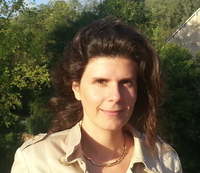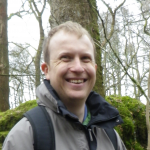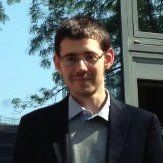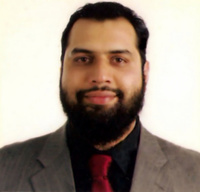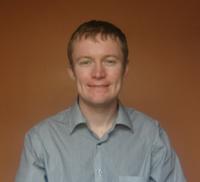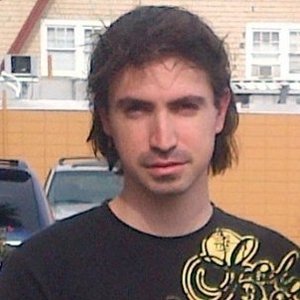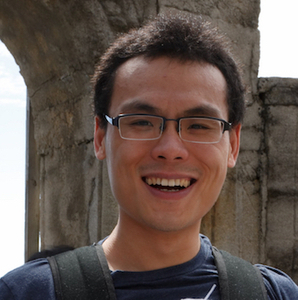Sensor Networks
News
- April 2014: We received the Best Paper Award at IPSN 2014 for the paper "Lightweight map matching for indoor localisation using conditional random fields"!
- February 2014: We received the Best Poster Award at EWSN 2014 for
the poster "A Case for Magneto-Inductive Indoor Localization"!
- January 2014: Launch of a new EPSRC Centre for Doctoral Training in Autonomous Intelligent Machines and Systems (AIMS) - directed by S. Roberts and N. Trigoni. It combines four themes: Robotics, Machine Learning, Verification&Control and Sensor&Actuator Networks. Several funded PhD positions are available every year with the first intake in 2014/2015 and the last in 2018/2019.
Research Activities
Research into sensor networks, led by Professor Niki Trigoni and Dr Andrew Markham, focuses on localization, communication and coordination algorithms for networked sensors. Here is a list of current and recent research projects funded by EPSRC, EOARD and other industry / government sources. For more details, please see the group's publications.
CURRENT PROJECTS
- Agile Asset Monitoring for Construction Sites (supported by Laing O'Rourke). This project involves outfitting a test construction site with a variety of sensors, including active/passive RFIDs, inertial sensors, motion detectors, magnetic sensors and GPS receivers. These sensors, which have different accuracy and energy profiles, will be connected through an ad hoc wireless network, and will be dynamically activated to take into account network conditions and tracking accuracy requirements. The focus will be on developing robust tracking techniques for challenging environments, e.g. locating objects among clutter, immersed in water or even buried underground. The project will also explore how to further improve tracking accuracy by exploiting existing CCTV infrastructure. For more details, please see the project's website.
- Intelligent Workspace Acquisition, Comprehension and Exploitation for Mobile Autonomy in Infrastructure Denied Environments (in collab. with the Robotics Research Group - supported by EPSRC). The aim of this project is to develop robust navigation and communications infrastructure for mobile agents (robots) to be able to interpret and navigate unstructured, unmodified workspaces, alone or in concert with other agents. Ground vehicles can significantly speed up the process of creating workspace representations by sharing the sensor data that they acquire, instead of relying only on their onboard sensors. In GPS-denied environments, the goal is to investigate how to exploit a variety of opportunistic signals (e.g. WiFi / BTLE, TV) as well as environment signatures (e.g. magnetic distortions due to metallic objects) to weave together vehicles' experiences even if they have been acquired using different sensor modalities. This will allow for building multi-modal maps and pave the way for long term navigation in infrastructure poor workspaces.
- Lightweight and Robust Indoor Positioning (supported by CSC). The aim of this project is to develop a positioning system that works reliably across users, motion modes and device types, is flexible to make the most of available resources (sensor data and maps), and is capable of learning and improving over time. The envisaged system will be able to work flexibly with or without bespoke positioning infrastructure. It should be lightweight enough to run on the user's mobile device without having to offload the position computation to the cloud. The basis of the positioning system is a robust pedestrian dead reckoning algorithm that works accurately for different motion modes (texting, hand swinging, device in trouser / shirt pocket, and so on) despite the noisy nature of inertial measurement units embedded in smart devices. In the presence of environment maps (e.g. floorplans, radio or magnetic fingerprint maps), the positioning system should be able to exploit them to correct the drift of the inertial trajectory, while improving the quality of the available maps as it acquires more data. Finally, the positioning system should be able to learn and improve its accuracy the more it is employed by a user in a particular setting. For more details, please see the project's publications.
- Being There: Humans and Robots in Public Spaces (supported by EPSRC). This is a cross-disciplinary project that brings together five teams of researchers, from Oxford, Exeter, Bath, Queen Mary and Bristol. The team will explore how one might preserve privacy, encourage trust in human-robot communication, and the implications of using a robot to stand in for the physical presence of a human. Our team's focus is on accurately capturing the location and orientation of individuals and robiots using low frequency magnetic fields. This technology has already been shown to yield accuracy in the context of underground animal tracking. However, the sensors used in that setting are too large and impractical to deploy in an indoor environment. In this project, we will design and use small magnetic beacons that generate low frequency fields. These fields will then be sensed by low-power miniature receivers carried by individuals and robots, thus enabling them to position and orient themselves relative to beacons. The most important property of MI positioning is that obstacles like walls, floors and people that heavily impact the performance of competing approaches (e.g. WiFi-based positioning) are largely "transparent" to the quasi-static magnetic fields. MI has a number of challenges to robust operation, including the presence of ferrous materials and sensitivity to user rotation. We aim to overcome these challenges, through signal processing and sensor fusion across multiple system layers. For more details, please see the project's publications.
- TrackSafe:Trackworker Safety (TSB). The key objective of this project is to develop an integrated system to greatly reduce the hazards for railway track workers when working on or near operational lines, whilst improving efficiency by integrating into a GIS mapping system. Over 70,000 trackworkers gain access to lines every year without any automated safety system in place. In the UK alone, four workers were killed in the last three years due to a train strike, with many more injured [source: Office of Rail Regulation]. This is particularly relevant for workers close to operational lines (red-zones), where trains can approach at over 100mph, giving very little warning of arrival. Safe working practice is complicated by dark and confined operating conditions (e.g. in a tunnel) and the use of noisy equipment. The main challenge is that trackworkers often operate in environments where conventional positioning techniques like GPS fail, such as within tunnels, under bridges etc. To overcome this limitation, a novel through-earth positioning technology based on vector magneto-inductive (MI) fields will be developed. One of the key advantages is that MI techniques also allow for bi-directional communication, without requiring a line of sight connection. This allows workers to be alerted (using a combination of audio, vibrating and flashing lights) that a train is approaching, allowing them to retreat to a safe point. In addition, by providing accurate location, workers can more rapidly be directed to the location of a particular asset. This could also lead to improvements in efficiency by monitoring the progress of a particular task, allowing a site supervisor to manage their team more effectively.
RECENT PROJECTS
- Federated Secure Sensor Network Laboratory (FRESNEL). The overall aim of this project is to develop a set of techniques which support sensor network federation and sharing. We depart from the traditional paradigm of a single sensor network that is deployed and optimized for a single application; instead we envision building secure multi-purpose federated sensor networks, which raise three novel challenges with regards to dynamic resource allocation, quality assurance in serving application requests, and privacy preservation. In terms of dynamic resource allocation, we assume conditions of limited bandwidth shared by multiple applications, and propose a novel cross-layer optimization approach that jointly makes routing, scheduling and sensor selection decisions to optimize data quality under these conditions. In terms of quality assurance, we assume co-location of multiple sensor networks that offer the same service and compete for users. We focus on the scenario of indoor positioning, and develop algorithms that allow users to estimate the accuracy of co-located positioning systems in different parts of a building, and dynamically switch to the best available one. Finally, in terms of privacy, we investigate privacy-preserving data aggregation protocols, which are designed to prevent attackers from learning individual sensor readings by processing multiple aggregate query results. For more details, please see the project's website and publications.
- Sensing, Unmanned, Autonomous Aerial VEhicles (SUAAVE). The focus of SUAAVE lies in the creation and control of swarms of helicopter UAVs (unmanned aerial vehicles) that are individually autonomous (i.e not under the direct realtime control of a human) but that collaboratively self-organise:to sense the environment in the most efficient way possible; to respond to node failures; and to report their findings to a base station on the ground. We have performed real UAV experiments to derive observation models that determine the accuracy of onboard sensors (e.g. cameras). Using realistic observation models, we designed distributed algorithms that enable UAVs to collaboratively search for a target. We are currently working on the use of UAVs to bridge communications between ground nodes, as well as to collect sensor data from a bed of ground sensors. For more details, please see this project's website and publications.
- Acoustic Actuated Sensor Networks for Industrial Processes (AASN4IP). The aim of this project is to develop an underwater mobile sensor network for exploring and monitoring enclosed and cluttered underwater environments like nuclear waste storage ponds. For the robots to sense and explore the storage pools, they must be able to determine their positions in these underwater environments. However, the cluttered nature of our application scenarios presents us with unique challenges. The ultrasound pulses used for performing range measurements can reflect and bounce off multiple surfaces before arriving at the the transducer. These multipath reflections introduce large positive errors in some of the estimated distances between the sensor nodes. These erroneous measurements make it very difficult to estimate the true positions of sensor nodes. Within this project, we are investigating one-hop and multi-hop localization techniques that are robust to non-line-of-sight measurements with large positive errors. We are also exploring the problem of optimally placing special-purpose 'localizer' nodes to further improve localization accuracy. For more details, please see this project's website and publications.
- Mobile and Sensor Nodes for Wildlife Monitoring (WILDSENSING). This project involves the deployment of an automated wildlife monitoring system for analyzing the social co-location patterns of European badgers (Meles meles) residing in a dense woodland environment. The system is made up of three components. The first consists of active RFID transmitters that are attached directly to European badgers (Meles meles) as wearable collars. They are monitored by a second component consisting of a collection of fixed detection nodes that are distributed throughout the woods at key locations close to known badger setts and latrines. The third component further complements the assembly by providing a bed of fixed sensor nodes that are deployed within badger foraging areas to monitor micro-climatic conditions and their effect on species migration and mobility patterns. In this context, we have proposed a delay-tolerant data collection approach, which leverages the movement of zoologists and other environmental scientists to efficiently collect sensor data. Not only do we prioritize data based on their urgency, but we also prioritize nodes based on the frequency in which mobile sinks visit them. In this way, we forward data to carefully selected storage nodes, purely based on data and node priorities. We have also investigated a biologically-inspired approach, based on gene regulatory networks, for automatically configuring parameters of the sensor network operation (e.g. sensing duty cycle) in response to changes in environmental conditions. Finally, we have recently started looking at the problem of tracking animals when they are underground. For more details, please see this project's website and publications.
- Transport Information Monitoring Environment (TIME-EACM). Road congestion in the UK costs of the order of £20bn pounds per annum. Urban areas would considerably benefit from a sensor network infrastructure able to detect traffic information at high spatial and temporal resolutions. In this project, we investigate two distinct approaches to collecting and disseminating traffic information: using special-purpose stationary sensor nodes (inductive loops, laser or infrared sensors) that collect and disseminate traffic information at regular intervals, and using mobile sensor nodes, e.g. vehicles equipped with GPS and wireless transceivers, that opportunistically collect information as they are roaming through the city. For more details, please see this project's website and publications.
- Agent-based Area Exploration and Event Detection in Emergency Scenarios. When an emergency occurs within a building, it is critical to explore the area as fast as possible in order to find victims and contain hazards. In this project, we propose the deployment of a group of autonomous mobile nodes, referred to as agents, to acquire all the information that could assist the task of the first responders. Such operations, however, may be obstructed by a number of limitations, e.g. the possible lack of a terrain map (the environment could anyway be heavily changed after a disaster), the lack of GPS positioning, the failure of previously established networks, and the short-range and often unreliable wireless indoor communication. In this project, we take into account these limitations, and propose a novel architecture consisting of both mobile nodes (agents) and stationary nodes (inexpensive smart devices). As agents enter the emergency area, they sprinkle inexpensive smart devices on the floor to tag the environment with a state. By reading and updating the local state (the state of the tags within a short communication range), agents are able to coordinate indirectly with each other, without relying on long-range wireless communication among each other. For more details, please see this project's website and publications.
Head of Activity
Contact for Activity
Faculty
Research
Past Members
Selected Publications
-
Leveraging User Activities and Mobile Robots for Semantic Mapping and User Localization
Stefano Rosa‚ Chris Xiaoxuan Lu‚ Hongkai Wen and Niki Trigoni
In ACM/IEEE International Conference on Human−Robot Interaction (HRI). Pages 267−268. 2017.
Details about Leveraging User Activities and Mobile Robots for Semantic Mapping and User Localization | BibTeX data for Leveraging User Activities and Mobile Robots for Semantic Mapping and User Localization | Download (pdf) of Leveraging User Activities and Mobile Robots for Semantic Mapping and User Localization
-
Robust Indoor Positioning with Lifelong Learning
Zhuoling Xiao‚ Hongkai Wen‚ Andrew Markham and Niki Trigoni
In IEEE Journal on Selected Areas in Communications. Vol. PP. No. 99. Pages PP. 2015.
Details about Robust Indoor Positioning with Lifelong Learning | BibTeX data for Robust Indoor Positioning with Lifelong Learning | Download (pdf) of Robust Indoor Positioning with Lifelong Learning
-
Indoor tracking using undirected graphical models
Zhuoling Xiao‚ Hongkai Wen‚ Andrew Markham and Niki Trigoni
In IEEE Transactions on Mobile Computing. Vol. 1. No. 1. Pages PP. 2015.
Details about Indoor tracking using undirected graphical models | BibTeX data for Indoor tracking using undirected graphical models | Download (pdf) of Indoor tracking using undirected graphical models

